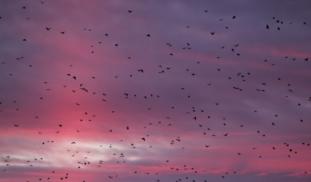Please wait...
About This Project
Large flocks of American Crows (Corvus brachyrhynchos) form across Upstate New York each winter, eating in fields by day, gathering—and defecating—in urban roosts at night. Roosts can contain tens of thousands of crows, and can connect rural and urban habitats in important ways. We will study crows’ ecological impact on the landscape, specifically the movement of nutrients through fecal nitrogen deposited under roosts.
More Lab Notes From This Project

Browse Other Projects on Experiment
Related Projects
Using eDNA to examine protected California species in streams at Hastings Reserve
Hastings Reserve is home to three streams that provide critical habitat for sensitive native species. Through...
City smart: Are cities making birds smarter?
One cannot go to Florida and miss the White Ibises roaming golf, park and private lawns. But how does a...
How do polar bears stay healthy on the world's worst diet?
Polar bears survive almost entirely on seal fat. Yet unlike humans who eat high-fat diets, polar bears never...





